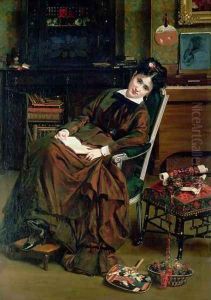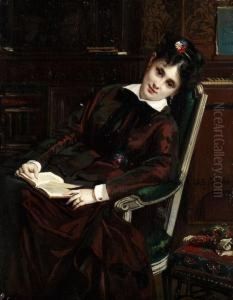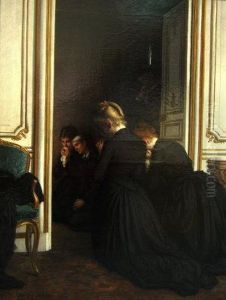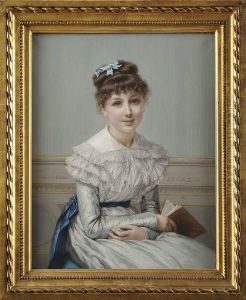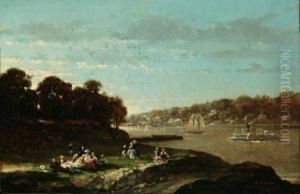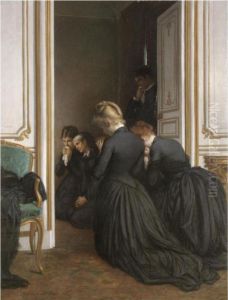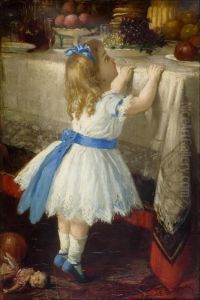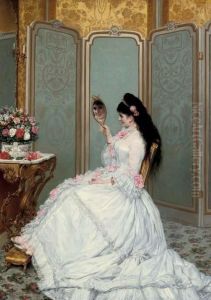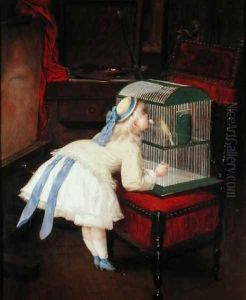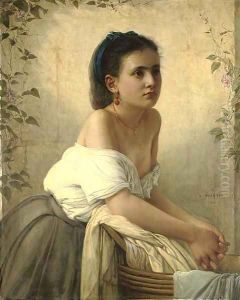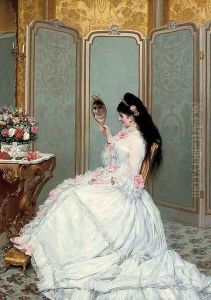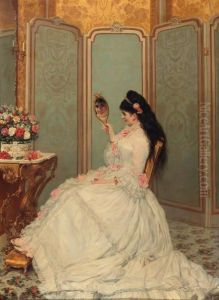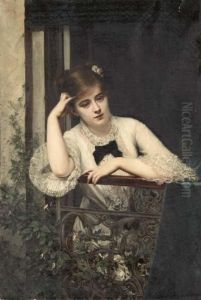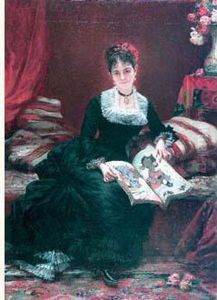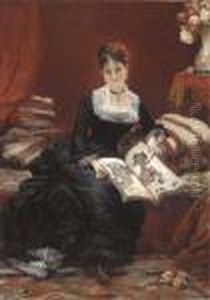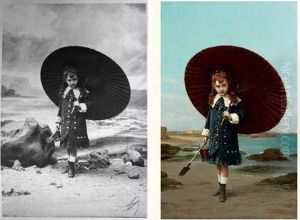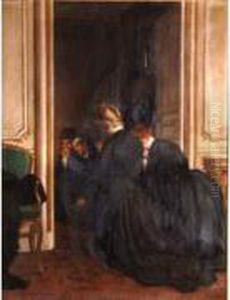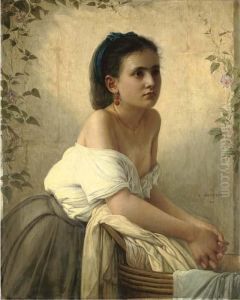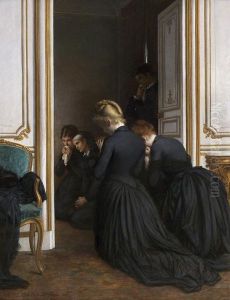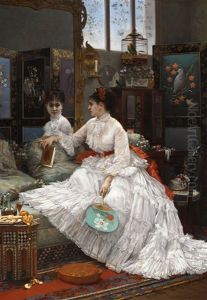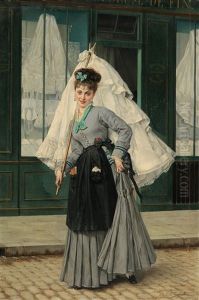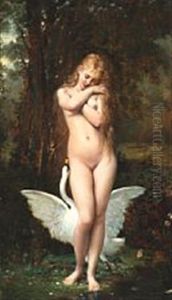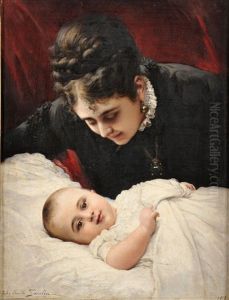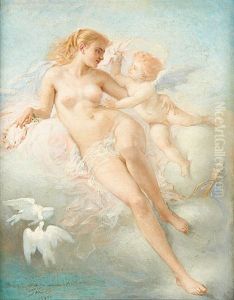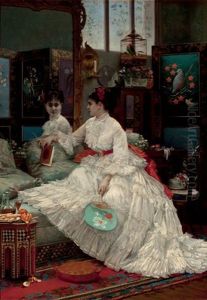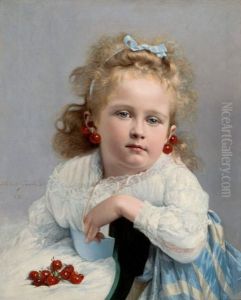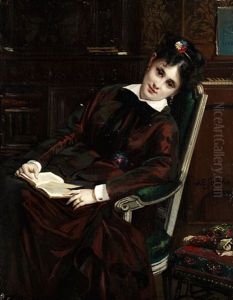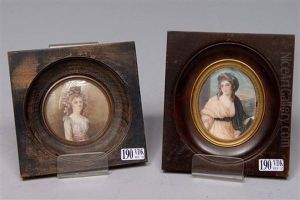Jules Emile Saintin Paintings
Jules Emile Saintin was a French painter born on February 14, 1829, in Lemé, Aisne, in northern France. He is known for his detailed and refined portraits, genre scenes, and historical paintings. Saintin studied at the École des Beaux-Arts in Paris under the tutelage of Léon Cogniet, a prominent French history and portrait painter of the time. He absorbed the academic style of painting, which emphasized precision, a clear narrative, and a polished finish.
Saintin's early career was marked by his adherence to the academic standards of beauty and composition, which gained him recognition in the Parisian art scene of the 19th century. He exhibited his work at the Paris Salon, the official art exhibition of the Académie des Beaux-Arts in Paris, where he received favorable reviews and commendations for his talent.
Throughout his life, Saintin created a wide range of artworks, including mythological scenes and religious works, but his portraits were particularly noted for their elegance and lifelike quality. His ability to capture the character and subtleties of his subjects' expressions made him a sought-after portraitist during his time.
Despite the changes in artistic trends towards Impressionism and Post-Impressionism in the latter half of the 19th century, Saintin remained committed to the academic style. His works, however, did not go unnoticed, and he was awarded several medals for his contributions to French art, including at the Exposition Universelle, an international exposition held in Paris.
Jules Emile Saintin passed away on July 20, 1894, in Paris. Although he may not be as widely recognized as some of his contemporaries today, his works are still appreciated for their technical skill and the glimpse they provide into the artistic conventions of his era. Saintin's paintings can be found in various museum collections and continue to be studied for their representation of 19th-century academic art.
